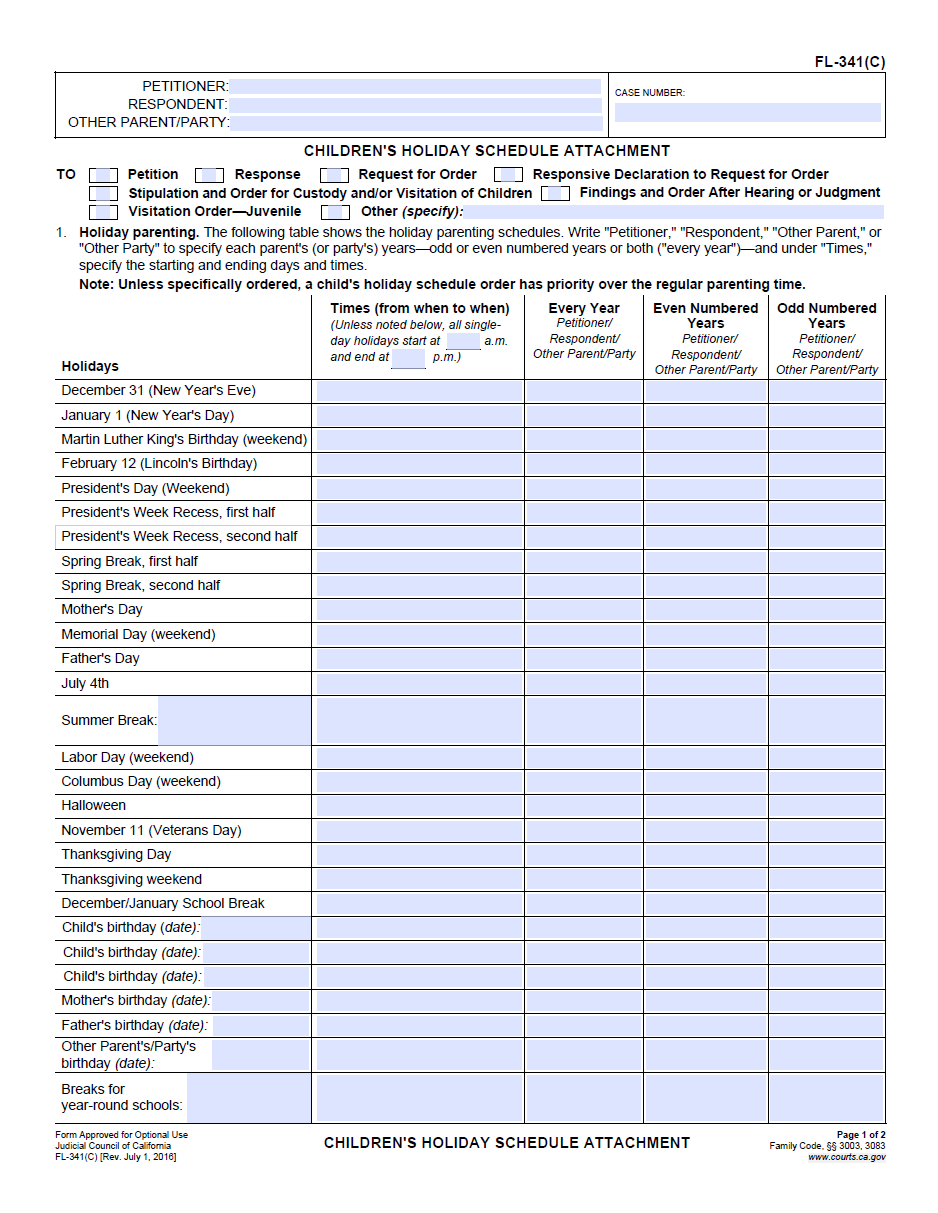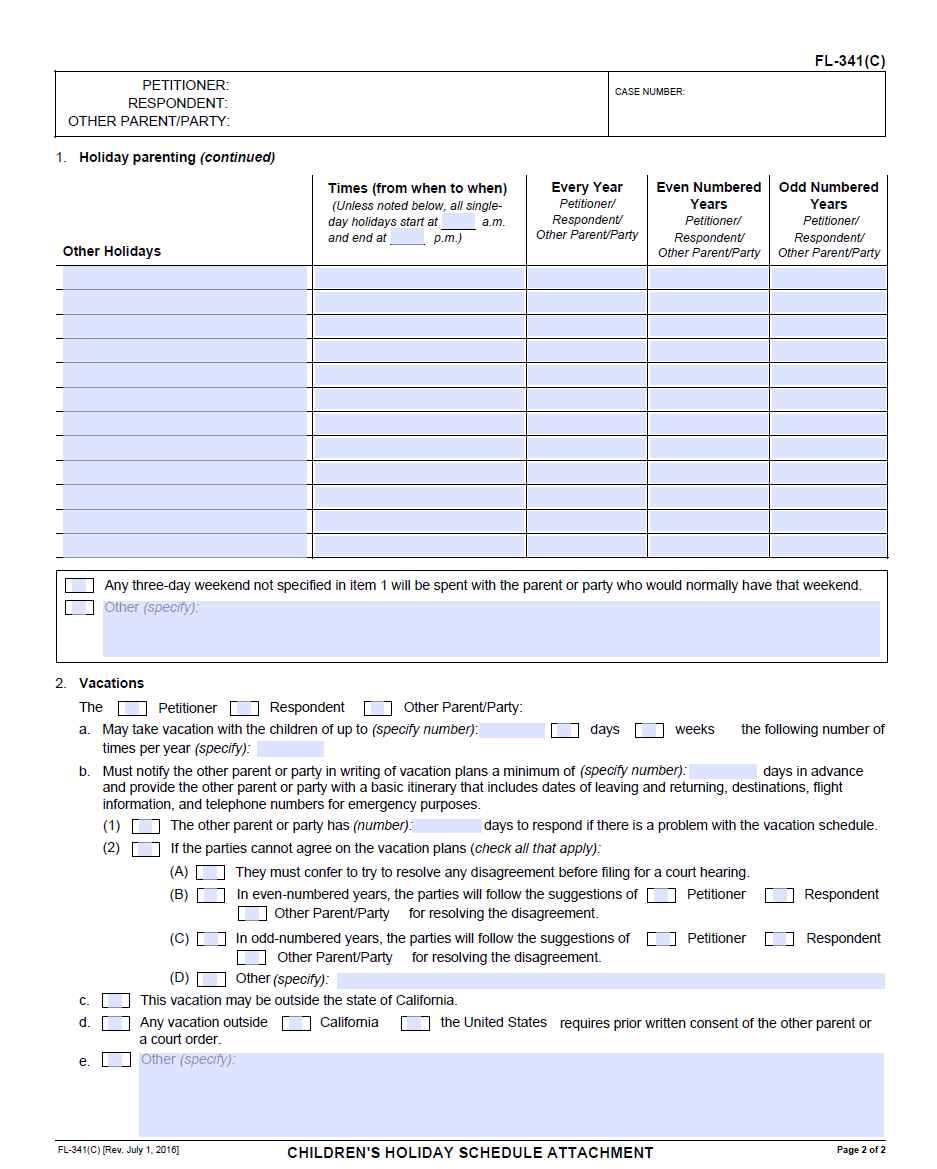50/50 Custody Schedules for Parents Who Want to Share Parenting Time
Here are different 50/50 custody schedules to pick one right for you and your children
A 50/50 custody schedule, sometimes called a "joint physical custody" schedule, refers to a parenting plan in which parents have equal time with their children. The children spend 50% of their time living with one parent and 50% living with the other.
Some parents use the words 50/50 custody schedule and joint physical custody to mean the same thing. However, they are not. 50/50 is specific. It means equal time. Joint physical custody can be less than 50/50 parenting time.
Parents can structure a 50/50 custody schedule differently, depending on the family's needs and circumstances. The focus should remain on the child or children's best interest.
Here are some common 50/50 custody examples
3 Most Common 50/50 Custody Schedules
Let's first briefly overview the three most common 50/50 custody schedules. We estimate the great majority of equal custody schedules fall into these categories. We will expand on these schedules and two less common ones later in this article.
Alternating weeks custody schedule
Alternating weeks is a 50/50 custody schedule where the child or children spend one week with one parent and the following week with the other. It is straightforward to follow but may not work well for families with young children.
An alternating week schedule (a week-on and week-off) is convenient. There is only one exchange of the children, and each parent has significant, consecutive time with the children.
Some parents do not like an entire week away from their child. Thus, it is common to have a dinner visit with the non-custodial parent in the middle of the week, like a Wednesday. That mid-week visit may be an overnight. It is also common for the other parent (the one who does not have the children for a week) to have scheduled phone or virtual contact with them so the children.
2-2-3 custody schedule
A 2-2-3 is a 50/50 custody schedule in which the child or children spend two consecutive days with one parent, two days with the other parent, and three days (usually the weekend) with the first parent. This schedule alternates back and forth between the two parents each week.
For example, the child or children may spend Monday through a Wednesday exchange with one parent, Wednesday through a Friday exchange with the other parent, and then Friday, Saturday, and Sunday with the first parent. The following week, the schedule reverses.
A 2-2-3 schedule can start any day of the week. It does not have to start on Monday.
A 2-2-3 custody schedule avoids the significant time away from each parent, but there are more custodial exchanges. Additional custody exchanges are challenging for mid to high-conflict parents. It is more suitable for younger children, where the priority in the 50/50 custody schedule is to avoid too much time away from either parent.
2-2-5 schedule
A 2-2-5 is a 50/50 custody schedule in which the child or children spend two consecutive days with one parent, two consecutive days with the other parent, and five consecutive days with the first parent.
This schedule alternates back and forth between the two parents each week.
For example, the child or children may spend Monday through a Wednesday exchange with one parent (that parent always has Monday through Wednesday), Wednesday through a Friday exchange with the other parent (the second parent always has Wednesday through Friday), and then Friday, Saturday, Sunday, Monday, and Tuesday with the first parent.
The following week, the schedule reverses, with the child or children spending Wednesday, Thursday, Friday, Saturday, and Sunday with the second parent and the rest of the week with the first parent.
A 2-2-5 schedule is a more stable custody schedule than a 2-2-3 because the weekday time is the same each week. It is a nice compromise between the 2-2-3 and week on and week off.
Joint custody 50/50 custody schedule with alternating weekends
In a 50/50 custody schedule with alternating weekends, the child or children spend equal amounts of time living with each parent.
The child or children typically spend weekdays with one parent and alternate between the two parents on weekends.
For example, the child or children may spend Monday through Friday with one parent and Saturday and Sunday with the other. The following weekend, the child or children would return to the first parent for the weekend, and so on.
This schedule allows the child or children to maintain a consistent routine during the weekdays with one parent and spend quality time with the other parent on the weekends.
This is not a common schedule, but it works well when parents live close to each other and do not want mid-week exchanges.
Two-day blocks for a 50/50 custody schedule
In a 50/50 custody schedule with two-day blocks, the child or children spend two consecutive days with one parent and then two consecutive days with the other, alternating back and forth.
Alternating two-day blocks is also not a typical schedule based on our experience, but some parents like that a child will only be away from the other parent for two days.
50/50 custody holiday and special day schedule
A 50/50 holiday custody schedule refers to a parenting plan in which parents have approximately equal amounts of time with their child or children during holidays and other special occasions.
Here is a screenshot of California Judicial Council Form FL-341(c) that sets forth the holidays and special days parents usually divide. Parents can choose some or all of these.


Important Articles on Child Custody
There are many ways a 50/50 holiday schedule can be structured, depending on the specific needs and circumstances of the family. Some common examples include:
- Alternating holidays: In this arrangement, the child or children spend one holiday with one parent and the next holiday with the other. For example, the child or children may spend Thanksgiving with one parent one year and the following Thanksgiving with the other. They often do this on an odd-year and even-year basis.
- Split holidays: In this arrangement, the child or children spend part of a holiday with one parent and part with the other parent. For example, the child or children may spend Christmas Eve with one parent and Christmas Day with the other.
What is the best schedule for 50/50 custody?
There is none. The right 50/50 custody schedule depends on the facts. Here is guidance on how most parents pick a 50/50 plan:
- Older children can handle a week-on and week-off or a 2-2-5 schedule better than younger children.
- A 2-2-3 custody schedule works well for parents who have good flexibility during the week with their schedules. Otherwise, a 2-2-5 custody schedule may be better because each parent has fixed weekdays.
- Maintaining a 50/50 custody schedule is challenging if one or both parents travel for work. Between the 50/50 schedules, a week-on and week-off works best for one or more traveling parents. It allows the traveling parent an entire week, twice per month, to travel without interfering with their custody schedule.
- Do not complicate the custody schedule. Think about the number of exchanges you will have each week or each month, especially if you and the other parent do not live close to each other. Focus on what is in the children's best interest, not what sounds convenient for you at the time.
Your Strategy Session
About your strategy session
Southern California Offices
Locations
Our Services and Fees
Frequently asked questions
Strategy sessions are designed for the serious parent. We know how important your children are to you. Their health, safety and best interests are our priority.
